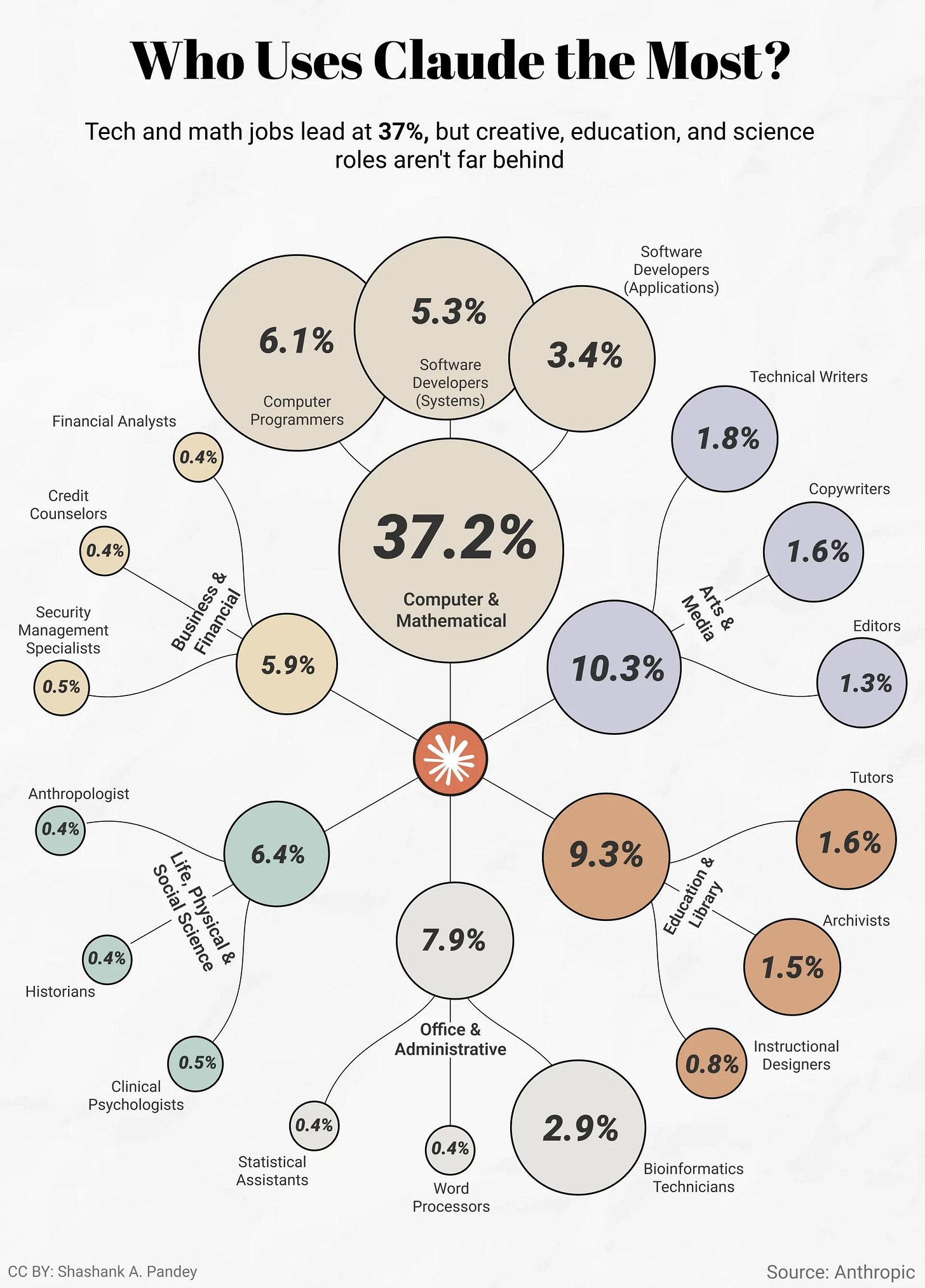Who’s actually using AI tools like Claude?
Five charts to start your day
Artificial intelligence was once a specialist’s toy. Now it is becoming everyone’s tool. What began in coding labs has spilled into classrooms, newsrooms and research centres, changing not only how we work, but how we think.
Anthropic’s data on Claude AI users shows just how wide that reach has become. Yes, computer scientists and programmers still dominate, but creative workers, teachers and scientists are fast catching up. AI is quietly dissolving the boundaries between technical and creative labour, offering anyone the means to code, compose or conduct research at scale.
That shift is reshaping the corporate landscape too. Meta’s profits show two very different realities: an advertising empire in full bloom, and a costly bet on the metaverse that may never mature. Apple is walking a steadier path, turning its hardware ecosystem into a subscription service engine that now defines its future more than the iPhone ever did. Beneath it all lies the infrastructure boom powering the new AI era: Nvidia’s dominance has rewritten the global semiconductor industry in just two years, leaving Intel in its wake.
And behind the numbers is a deeper question about knowledge and progress. The United States still leads the world in Nobel Prizes, but its supremacy reflects the same forces driving today’s AI boom: institutions that attract talent, fund research and reward innovation. The geography of genius may be changing, but the logic remains familiar: where opportunity concentrates, excellence follows.
These charts tell the story of a new hierarchy in the making, one built not on oil or steel, but on ideas, algorithms and access.
Quick note — Killer Charts has been $8/month and $80/year since launch two years ago. From 1 December the price for new subscribers will rise to $10/month and $100/year. If you’ve been meaning to upgrade, you can lock in the old rate for life here.CHART 1 • Who’s actually using AI tools like Claude?
According to Anthropic, the biggest users of its AI chatbot Claude come from computer and mathematical fields, making up more than 37% of total users. That includes programmers, software developers and data specialists. But creative, education and science roles are not far behind.
Around 10% of users work in media and the arts, using Claude for writing, editing and research. Another 9% come from education and libraries, where tutors and instructional designers are integrating AI into teaching and course design. Scientists and psychologists also feature prominently, reflecting the growing use of generative AI in analysis and experimentation.
The data suggests AI adoption is no longer confined to coders – it is spreading fast across knowledge and creative work industries.
If every profession can now harness AI for thinking as well as doing, what does that mean for the future of work and the skills that will matter most in the next decade?
Source: Shashank A. Pandey
The data this week captures a turning point. AI technology has stopped being a frontier technology and become an everyday companion, shaping how we learn, create and compete. But with that shift comes a fresh imbalance. Those with access to the tools, data and computing power will surge ahead. Those without risk being left behind.
Every industrial revolution widens the gap before it narrows. The challenge this time is to make sure intelligence, both human and artificial, remains a public good, not a private empire.
I’ve got four more charts that expand on this story, but they’re for paid subscribers. Consider joining if you want the full edition and deeper insights into how technology, talent and capital are reshaping the global economy.




